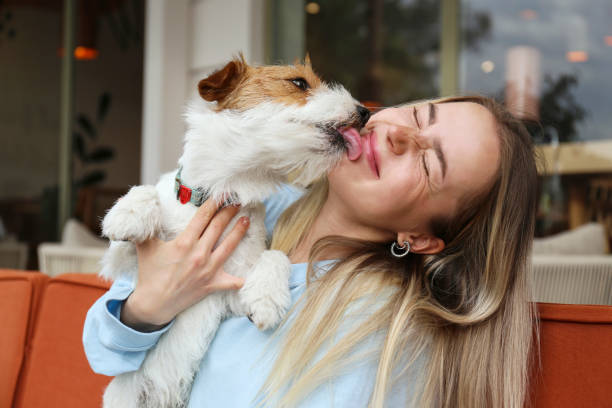10 Things You Should Never Do When Disciplining a Jack Russell Terrier
Training and Disciplining a Jack Russell Terrier can be extremely challenging, especially when you are a first dog owner. They are one of the most intelligent breeds of dogs, but this intelligence often makes them misbehave because they know how to get what they want out of you. When I’m trying to discipline my dog, I always follow these 10 rules to make sure that she learns the lesson and doesn’t keep acting out. Here are some things you should never do when trying to discipline your Jack Russell Terrier.
1) Put your dog in his crate
One of Jack Russell Terriers’ most defining characteristics is their penchant for chewing. If you want to keep your belongings in pristine condition, then one way to keep your pup in check is by putting him in his crate when he’s misbehaving.
The notion that crates are cruel has been debunked several times over and yet pet owners still hate putting their pups into them for fear that they are being too harsh or traumatic on them.
This could not be further from the truth. In fact, placing your dog in his crate can be incredibly effective as long as you don’t overdo it—no more than an hour at a time should do it! Think of it like homework time—it isn’t fun but necessary if you want good grades.
2) Coax, cajole and be sweet
The best way to discipline a Jack Russell is with positive reinforcement and treats. Contrary to popular belief, you do not need physical force or negative feedback in order for your dog to learn from their mistakes.
For instance, if your dog jumps on you and knocks over your cup of coffee, instead of yelling at them or hitting them, gently push them away from you so they lose their balance.
This will show them what behavior isn’t allowed. Then when they are calm and quiet, lavish them with praise and a treat. They’ll quickly pick up on what works!
3) Call him by name a lot
If you’re mad at your dog, it’s easy to get frustrated and forget his name. Don’t snap at him—take a moment and refocus yourself, says Konecny. Think about what you want from him before you address him.
Remember that dogs communicate differently than humans; it may take some training for them to understand your cues. If he doesn’t come when called, do not chase after him or yell at him when he does come.
Instead, go back inside for five minutes and ignore his attempts at attention until he is calm again and can listen to you without getting excited or aggressive.
4) Ignore him completely
This is one of the worst things you can do when trying to discipline your dog. Dogs feel most secure when they are with their owners, and ignoring him or giving him attention only on your terms will just make him feel anxious and abandoned.
Even if he has been behaving in an unacceptable way, be sure to greet him warmly and try not to let even minor transgressions pass without comment or correction.
5) Be consistent
It’s important that you consistently correct your dog for bad behavior so that he knows what’s acceptable and what isn’t. For example, if you don’t respond every time he barks at other dogs, then his behavior won’t change because he hasn’t gotten any feedback from you about it.
6) Reward bad behavior with attention
You must try by all means not to reward bad behavior with attention. For instance, if you give your dog some food each time it jumps on the furniture, it will likely continue jumping up. Instead, make sure your pup understands what you expect of it by getting down on its level and teaching it basic commands like sit and stay.
After you’ve taught your dog not to jump, reward them with attention when they choose not to do so. In other words: treat good behavior with love and affection!
By showing your pooch that being disciplined is its best choice, you’ll earn its respect—and teach it that obeying can be fun too. (Of course, just because we said don’t reward bad behavior doesn’t mean give treats for no reason!)
7) Correct bad behavior with aggressive tactics
If you punish bad behavior in your dog by putting him in his crate, not letting him eat or drink, hitting him or using electric shock collars, etc., then you may be creating more problems than you solve.
Puppies and young dogs learn by mimicking their humans, so if you’re acting frustrated when disciplining your dog he might pick up on that rather than what he did wrong.
Try keeping your cool if your puppy gets into something she shouldn’t and remove her from it. Give her attention when she’s being good and know that you have all of the time in the world to correct her actions.
8) Yell at your dog
It’s tempting, but if you’re dealing with a stubborn Jack Russell Terrier, it will only make him or her more obstinate. A dog’s bark is his or her first line of defense against danger and he or she might become confused if you are yelling at him.
9) Let other people handle the training
All dogs, including jack russell terriers, are pack animals. This means they have an instinctive desire to be led by a strong alpha dog.
If you’re not confident in your own leadership skills or don’t take your role as pack leader seriously, it’s possible your dog will be less receptive to training.
If you aren’t sure of what steps to take when training your dog and need help making sense of things, consider hiring an expert who can walk you through everything step-by-step.
10) Give up on training him entirely
Every dog is different, and every dog will respond differently to training techniques. The key is recognizing that you won’t be able to get your Jack Russell (JRT) to stop doing something just by shouting no! at him over and over again.
He might stop for an hour or two after your third or fourth no, but that kind of half-hearted effort simply isn’t going to change his behavior permanently. If you genuinely want a well-behaved JRT, you need training—lots of it. Fortunately, there are tons of great resources out there, including some very specific books that should help you tame your furry friend.









![Can My Jack Russell Terrier Sleep In My Bed? [ 7 benefits and 6 side effects] cute small jack russell dog to sleep in my bed](https://jackrusselterrier.net/wp-content/uploads/2023/03/istockphoto-521498440-612x612-1.jpg)



